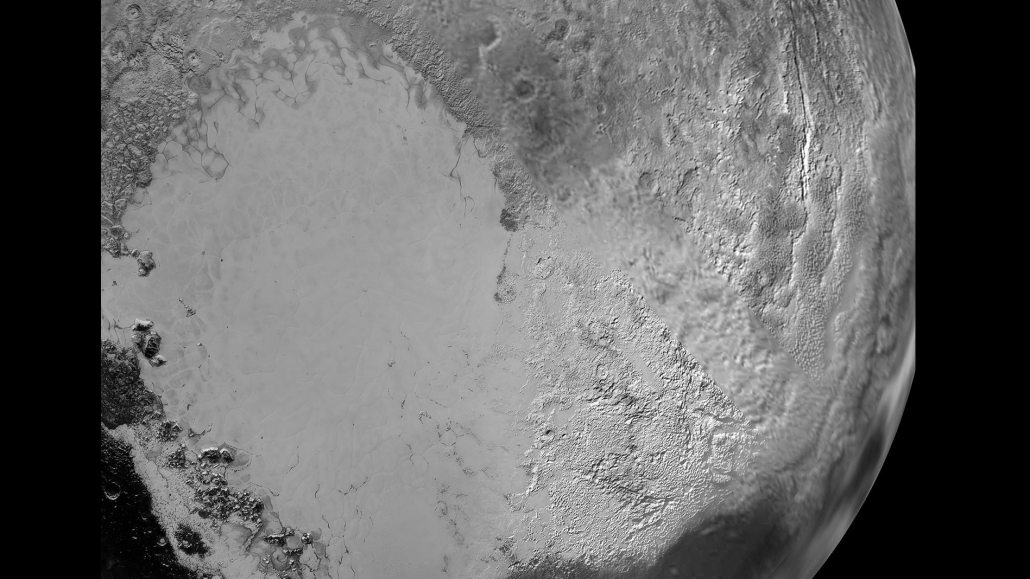Impact from a space rock might have formed Pluto’s heart

The left side of Pluto’s heart (pictured) might be the relic of an ancient impact crater, new analysis suggests.
NASA, JHUAPL, SWRI

The left side of Pluto’s heart (pictured) might be the relic of an ancient impact crater, new analysis suggests.
NASA, JHUAPL, SWRI